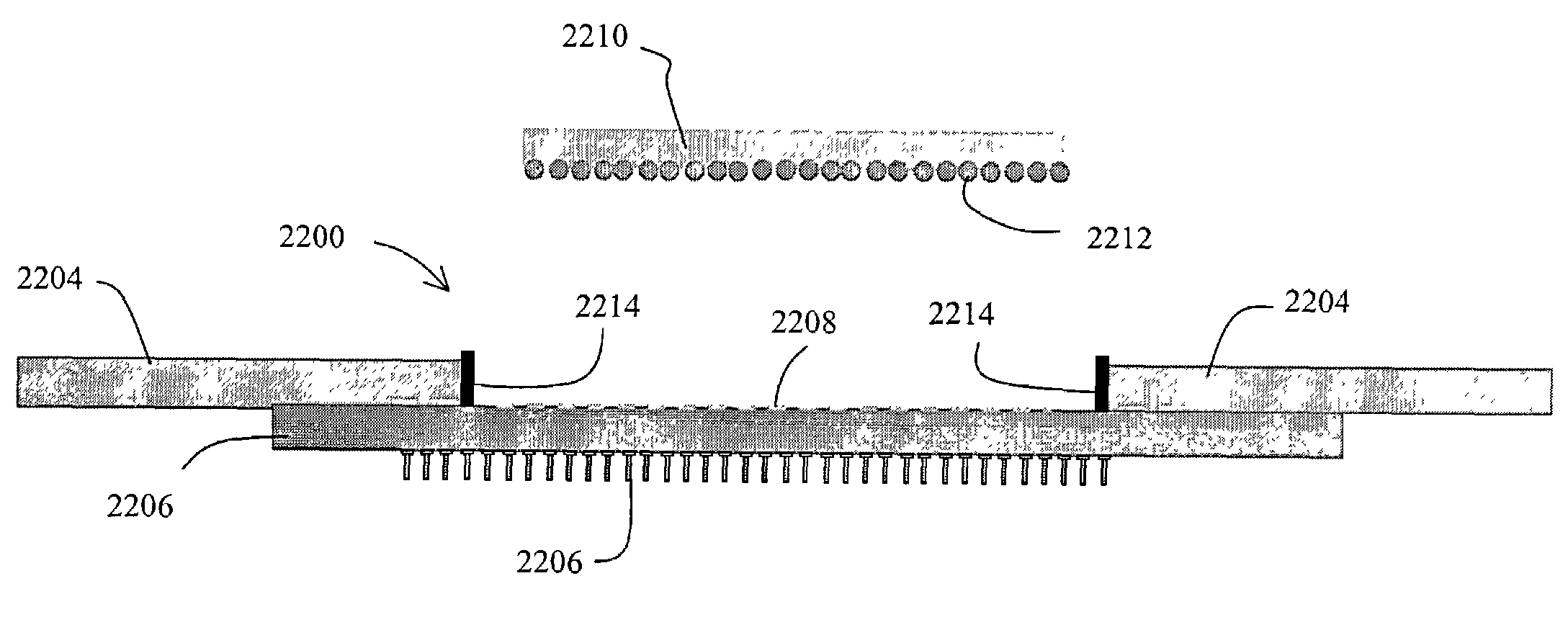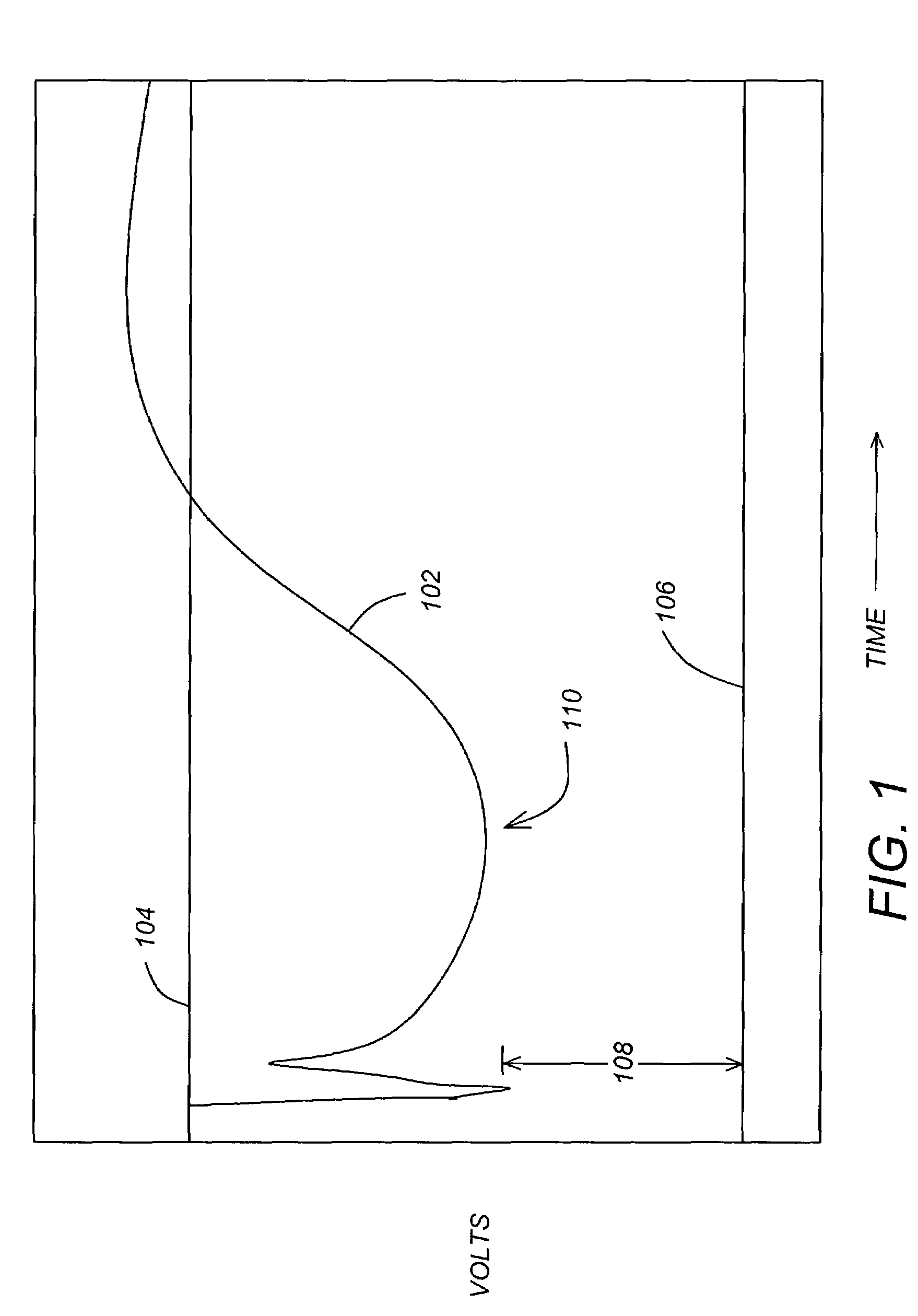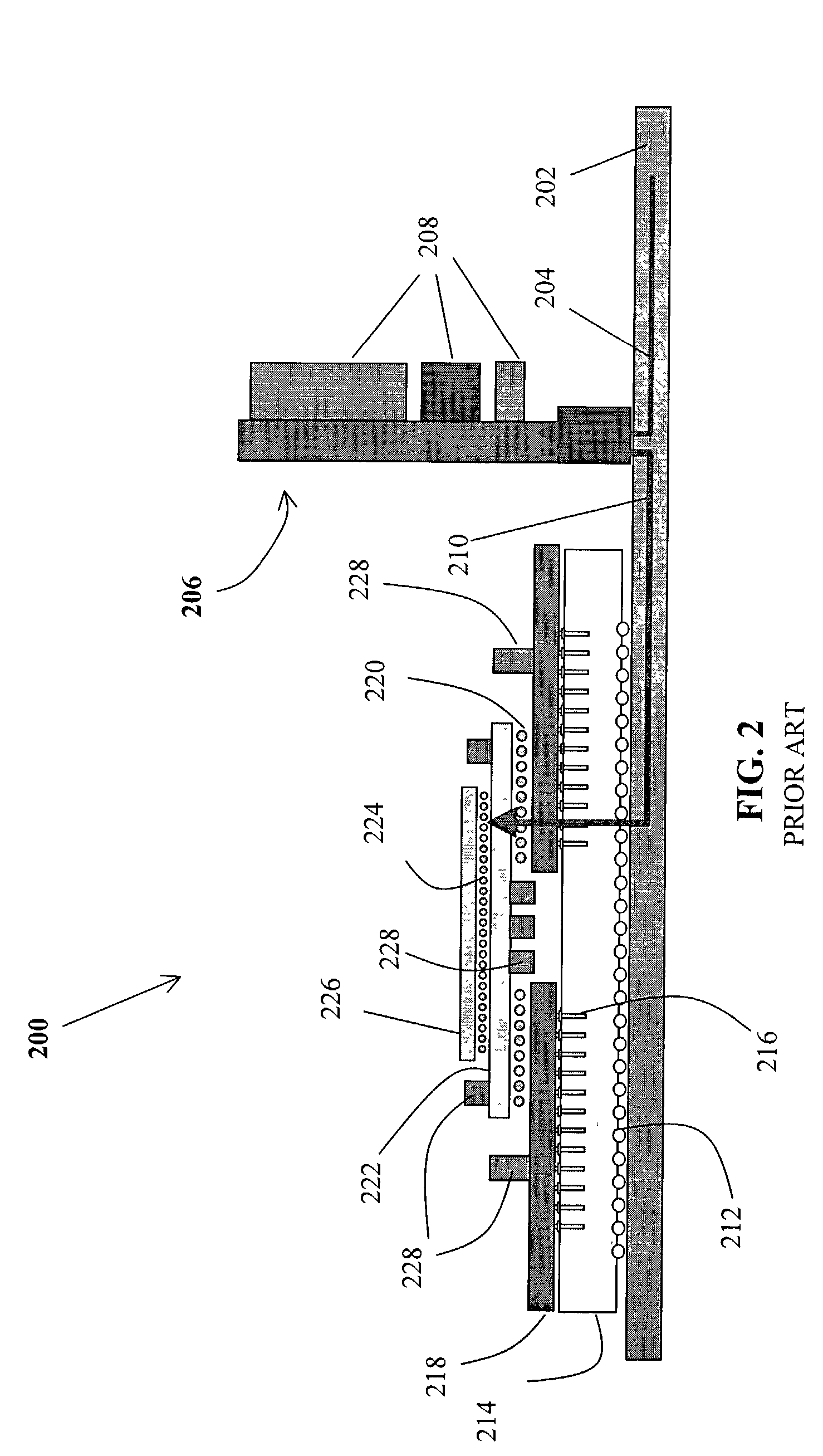Method and apparatus for providing power to a microprocessor with integrated thermal and EMI management
- Summary
- Abstract
- Description
- Claims
- Application Information
AI Technical Summary
Benefits of technology
Problems solved by technology
Method used
Image
Examples
Embodiment Construction
[0085]In the following description, reference is made to the accompanying drawings which form a part hereof, and in which is shown, by way of illustration, several embodiments of the present invention. It is understood that other embodiments may be utilized and structural changes may be made without departing from the scope of the present invention.
i-PAK Architecture
[0086]FIG. 3 is a diagram illustrating a typical microprocessor or electronic circuit package 300. A lid 304 which is usually composed of copper or other high thermal conductivity material is bonded to a substrate 302 using adhesive or metallurgical connection at junction 306. Also bonded to the substrate 302 is a microprocessor or electronic circuit 310. The connection between the substrate and the processor 310 can be made using solder balls (bumps) known as “flip-chip” or C-4 (controlled collapse chip connection). The physical gap between the substrate 302 and the processor 310 is occupied by a polymeric composite cal...
PUM
 Login to View More
Login to View More Abstract
Description
Claims
Application Information
 Login to View More
Login to View More - R&D
- Intellectual Property
- Life Sciences
- Materials
- Tech Scout
- Unparalleled Data Quality
- Higher Quality Content
- 60% Fewer Hallucinations
Browse by: Latest US Patents, China's latest patents, Technical Efficacy Thesaurus, Application Domain, Technology Topic, Popular Technical Reports.
© 2025 PatSnap. All rights reserved.Legal|Privacy policy|Modern Slavery Act Transparency Statement|Sitemap|About US| Contact US: help@patsnap.com



